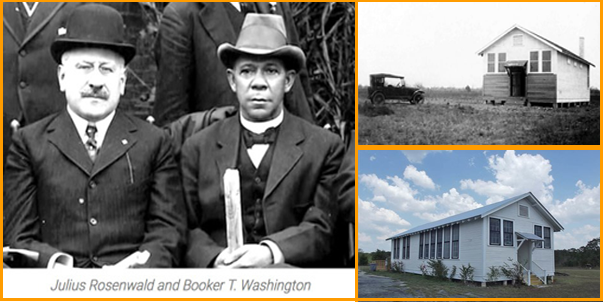Booker T. Washington of the Tuskegee Institute and Julius Rosenwald, philanthropist and president of Sears Roebuck, built state-of-the art schools for African-American children across the South. The effort has been called the most important initiative to advance black education in the early 20th century.
Attending a Rosenwald School put a student at the vanguard of education for southern African-American children. The architecture of the schools was a tangible statement of the equality of all children, and their programming made them a focal point of community identity and aspirations.
By 1928, one-third of the South’s rural black school children and teachers were served by Rosenwald Schools.
Threat
Despite the schools’ historical significance, only a small percentage of Americans are familiar with the structures and their impact on our nation’s history. While some schools are being preserved for community use, lack of resources and neglect still threaten many others.
History
When a 1954 Supreme Court ruling declared segregation in education unconstitutional, Rosenwald Schools became obsolete. Once the pride of their communities, many were abandoned or demolished. In 2002, the National Trust joined forces with grassroots activists, local officials, and preservationists to help raise awareness of this important but little-known segment of our nation’s history, placing Rosenwald Schools on its 11 Most Endangered Historic Places list. Of the 5,357 schools, shops, and teacher homes constructed between 1917 and 1932, only 10–12 percent are estimated to survive today.
The National Trust is providing technical assistance, grants, workshops, and conferences to help save these icons of progressive architecture for community use.


